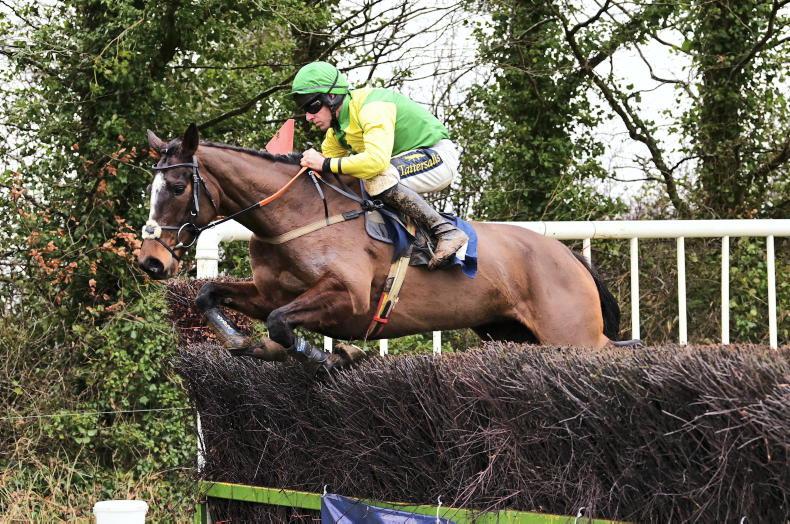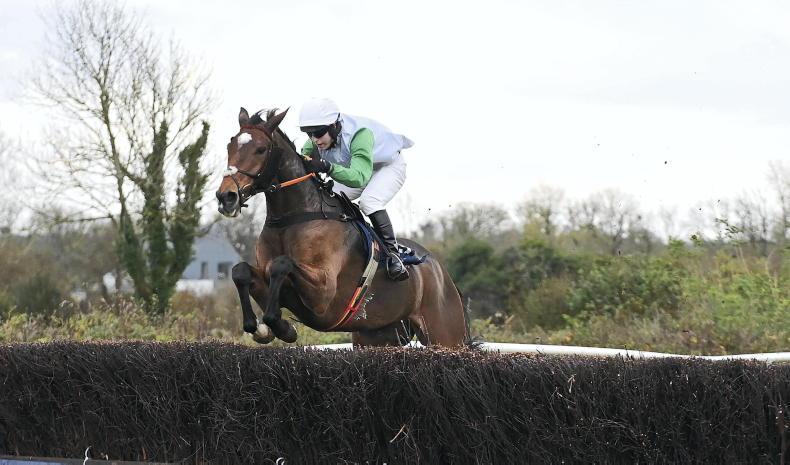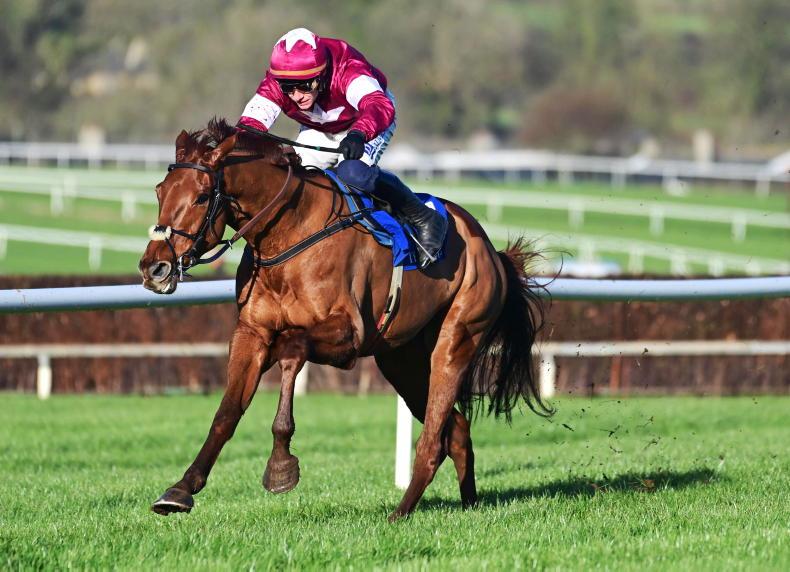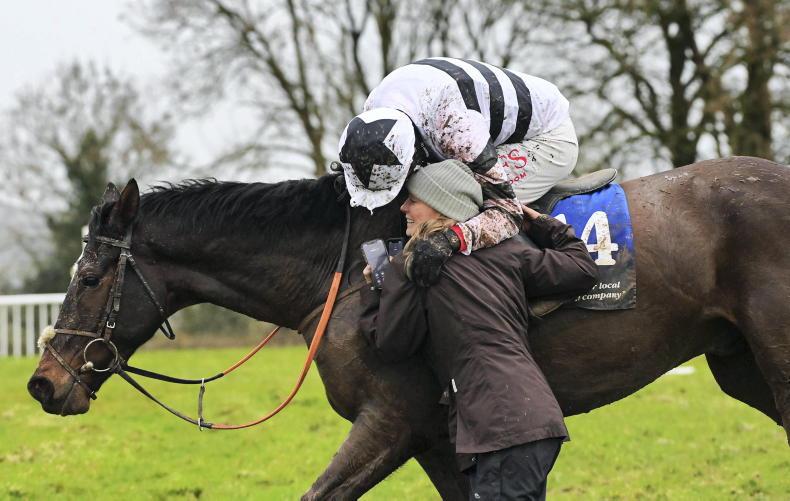A FINAL day double header at Ballingarry and Inchydoney brought the curtain down on the point-to-point season, and it is a season that highlighted so many of the success stories within the sport at present.
The formidable combination of Barry O’Neill and Colin Bowe maintained their positions as the dominant forces within both the rider and training division.
For O’Neill it was a seventh successive year to be crowned champion rider, while his chief ally Bowe is champion handler for an eleventh time and the ninth year in a row.
In sports such as this, that achievement of maintaining such a formidable stranglehold on their respective prizes can often be wrongly overlooked.
Much of the autumn term saw open prizes being plundered by former Grade 1 winners that had turned their attention to the pointing fields.
It is fitting in that context to have Rocky’s Howya crowned as the champion point-to-pointer, a horse that began the season winning an older maiden at Ballycrystal in October before progressing through the ranks.
The insatiable demand for proven point-to-pointers was again driven by results on the racetrack which saw the likes of the Champion Hurdle and Grand National among the 99 big-race prizes which went the way of horses that had started their careers point-to-pointing here.
This week there was a reminder of one of the more challenging points of the season, with the headline “Horse-racing industry ‘hammered’ by insurance costs” adorning an article on the RTÉ News website on Monday.
The article detailed the contents of two letters sent to the Department of Agriculture from Horse Racing Ireland in advance of last year’s budget as they sought additional funding.
Sky-high insurance
Within the article, HRI chairperson Nicky Hartery is reported to have stated that point-to-point racing had been particularly hard hit with sky-high insurance costs and rising bills for transport and maintenance.
Ultimately insurance did raise its head once again this season, most significantly at the end of April, and while the sport was spared the prospect of a number of cancellations to late season fixtures, it was a timely reminder of the danger it presents.
Who knows what the evolving insurance landscape may look like in the years to come and its effects on the sport, but for point-to-pointing most immediately, an out-of-season renewal date must surely be a key request to ensure any issues that arise in future fall at a time that will have minimal impact on it.
ON the track, a total of 2,251 horses ran this season, with entry numbers remaining encouragingly north of the 11,000 mark.
As a significant income stream for hunt committees, a total entry of 11,387 for the season continues a trend of strong entry numbers which has remained since Covid-19, driven largely by the multiple entries on a weekend for four and five-year-old horses.
The continued fall in the number of older horses remains as the obvious point of concern.
Ten years ago, horses aged seven and older accounted for 31% of the hunter certificates at the end of the 2012/13 season.
That figure had dropped to 24% at the end of the 2016/17 season, and by the end of this season, the figure has continued to fall to a new low of 16%.
In that same period, the number of four-year-olds have gone from accounting for just 16% of hunter certificates 10 years ago to 32% this season, in an almost exact flip of fortunes when compared to older horses.
The growth in four-year-old numbers has cushioned the sport from feeling the full effect of the decline in the older horse population, as borne out by those particularly strong entry numbers.
However, the continued loss of older horses from the point-to-point system has likely had a contributing spin-off impact elsewhere. One such area being within the training ranks.
Champion handler Colin Bowe was one of 183 handlers to have saddled at least one winner this season.
That is however, the lowest figure within that metric in the past decade when the two Covid-19 interrupted campaigns are excluded, with the number falling by 20% in comparison with the 230 handlers that saddled a winner in the 2016/17 campaign, despite this current season actually featuring more races.
Riders
Meanwhile, the number of individual riders recording at least one winner rose to 116 this season, a figure that has only been bettered once in the past decade.
Given that this highlights the real opportunity that currently exists for the sport to really embrace a role of encouraging more and more young riders into the sport, mirroring the role point-to-pointing has with introducing young equine talent into competitive action, the manner in which the use of the whip has been policed this season in such a draconian fashion has been an obvious sore point.
Ahead of the final weekend of the season, no fewer than 145 days’ worth of suspensions had been dished out, the injustice of which when compared to their professional counterparts on the track has already been highlighted in these pages this season.
Only in one of those suspensions was a rider ordered to attend RACE for tuition on the correct use of the whip.
Why have the sport’s authorities not taken a more educating approach, for what are a largely young cohort of riders in the early years of their careers in the saddle, utilising the likes of the sports educating arms such as RACE and equuip, rather than turning to punishment as the supposed only option open to them?
Ironically, with the carrot and stick approach, it is the stick that seems to be very much favoured here.
RESEARCH by Deloitte, leading advisors to the sports business market, has provided further evidence as to the economic value of point-to-pointing for the Irish economy.
The findings were published last week by Horse Racing Ireland as part of their Social and economic impact of Irish thoroughbred Breeding & Racing 2023 report.
It noted that the total sales of Irish point-to-point graduates has grown to an approximate value of £51 million.
The previous Horse Racing Ireland commissioned report from Deloitte, which was published in 2017, had put a value of £21 million on the sale of point-to-point graduates.
That represents a 142% increase in six years, with the value increased by a staggering £30 million.
Value
Converting this latest value for the sale of horses into Euro, alongside the values that Deloitte have applied for both owners’ expenditure (€25 million) and racegoers expenditure (€2 million), puts a value of €85 million on point-to-pointing here.
In publishing its 2023 budget last December, Horse Racing Ireland committed a total of €2.6 million in funding to point-to-pointing, which in the face of this latest Deloitte report, has to be considered as an exceptionally good return for that investment.
The Irish Field Champion Rider – Barry O’Neill
p2p.ie Champion Lady Rider – Maxine O’Sullivan
TRI Equestrian Champion Under-21 Rider – Dara McGill
INHSC Champion Senior – Derek O’Connor
Horse Racing Ireland Northern Champion – Barry O’Neill
Horse Racing Ireland Eastern Champion – Barry O’Neill
Horse Racing Ireland Western Champion – Pa King / Derek O’Connor
Horse Racing Ireland Southern Champion – John Barry / Chris O’Donovan
Race Displays Ireland Leading Handler – Colin Bowe
Tattersalls Ireland Horse of the Year – Its On The Line*
ITBA Champion Mare – La Feline*
Connollys Red Mills Champion Pointer – Rocky’s Howya
Goffs Leading Sire - Mahler
Weatherbys Leading Breeders Award - Maria Kavanagh
Healys Personality Award – Announced June 10th
INHSC Spring Novice Rider Series – Cal Shine
* Horse of the Year & Champion Mare awards will be confirmed following the final hunter chase of the season at Listowel on June 5th.


 This is a subscriber-only article
This is a subscriber-only article
 It looks like you're browsing in private mode
It looks like you're browsing in private mode












SHARING OPTIONS: